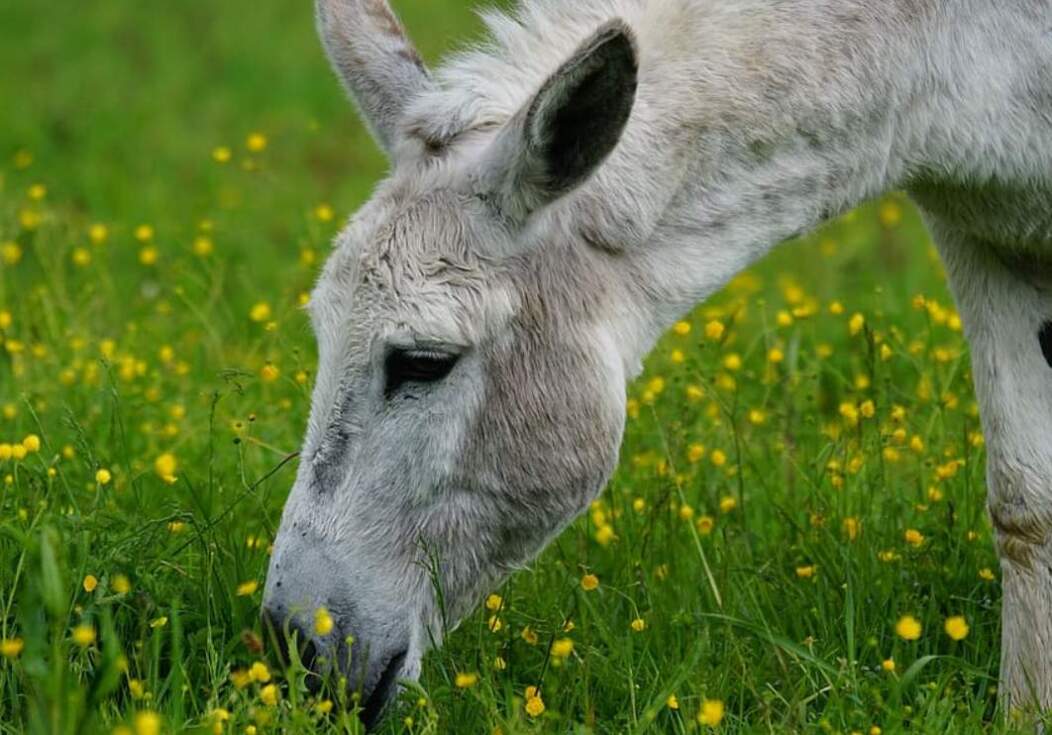There are many domestic animals that have been described in history for several reasons. Here we discussed donkeys, cats, and geese.
Domestic donkey (Equus asinus/Equus africanus f. asinus)
Researchers previously believed that wild donkeys (Equus africanus) were confined to North Africa, but new findings suggest they also existed in Asian regions adjacent to Africa. Consequently, the view that the donkey was domesticated in Egypt from a subspecies found in the Eastern Desert (E. a. africanus) has lost some credibility. In Ma’adi near Cairo (circa 3600 BC), bones were attributed to domestic donkeys with reasonable certainty.
There were quite a few large donkeys among the ancient Egyptians. Pictorial records generally depict it as grey, often with a dark stripe along the back and a short stripe across the shoulders. Before the dromedary was adopted, donkeys traveled widely in the desert in considerable numbers. Besides treading seeds in the field, they were also used for threshing. There is a pictorial record showing elites traveling in a sedan between a couple of donkeys, but it is not clear whether the animals were used for riding.
Domestic cat (Felis catus/Felis silvestris f. catus)
Evidence indicates that the domestic cat originated in ancient Egypt, but timing and motives are unclear.The African wild cat, formerly known as Felis libyca, was the ancestor, and it is now considered to belong to the same species as the European wild cat (F. silvestris) and its Asian relatives (formerly F. ocreata), hence F. silvestris libyca. They appear to be less shy and individualistic than European wild cats and could be easily tamed.
Many scholars believe that the domestication of the cat began when wild cats were attracted to rodents living on reserves in early food-producing communities, and were adopted to control pests.It is unlikely that such a scenario would be necessary since pet-keeping is a universal human habit.Among the few Predynastic cats found at Mostagedda (Badarian period) is one buried with a gazelle.
In tomb paintings, cats were found long before the Middle Kingdom, which may indicate a close association between people and cats (not necessarily domesticated). During New Kingdom times, they were portrayed as pets of the wealthy, but none of them showed obvious domestic characteristics.
In the 18th century BC, cat deification began, leading to the worship of various cat goddesses, especially that of Bastet, as well as the practice of mummifying cats and the creation of cat cemeteries, like those at Bubastis. There is a larger size difference between these mummified cats and their wild counterparts. On the assumption that domestication always leads to size decline, a notion that is debated for small animals, this has been interpreted as an indication of incomplete domestication.
There are also fossils of small cats from Elephantine and a grave near Balat (Dakhla Oasis) with a smaller cranial capacity than African wild cats, as would be expected for primitive domestic cats. Accordingly, domestication of cats may have already occurred during the Old Kingdom. Most of the finds studied had large sizes, which indicates that the animals lived in optimal conditions, especially in later times when they had acquired a privileged status.
Domestic goose (Anser anser domestical Anser anser f. domestica)
There is evidence that the goose may have been domesticated in Europe some 6,000 years ago, but some scholars believe that the domestication process began in south-west Asia. Ancient Egyptians often sacrificed geese as food, and an impressive number of geese would come to the Nile to winter and were captured and fattened for sacrifice. Anser anser (gray goose) had already been domesticated during the Old Kingdom, probably to increase the supply of meat and achieve a more tender texture.
Gray goose was a native species in Egypt, but today it rarely winters in the country; therefore, it has been thought that Egyptians domesticated Nile goose (Alopochen aegyptiacus). It appears that goslings, as well as white-feathered geese, were depicted in paintings from the 5th Dynasty. The remains of dwarf geese and large geese, both of which probably exceed the size of modern large breeds, were found at Elephantine (Ptolemaic period) and at Tell el-Maskhuta in the Wadi Tumilat (Late period).

Read More – Fauna, & Process of Domestication
Originally posted 2023-10-05 06:59:17.